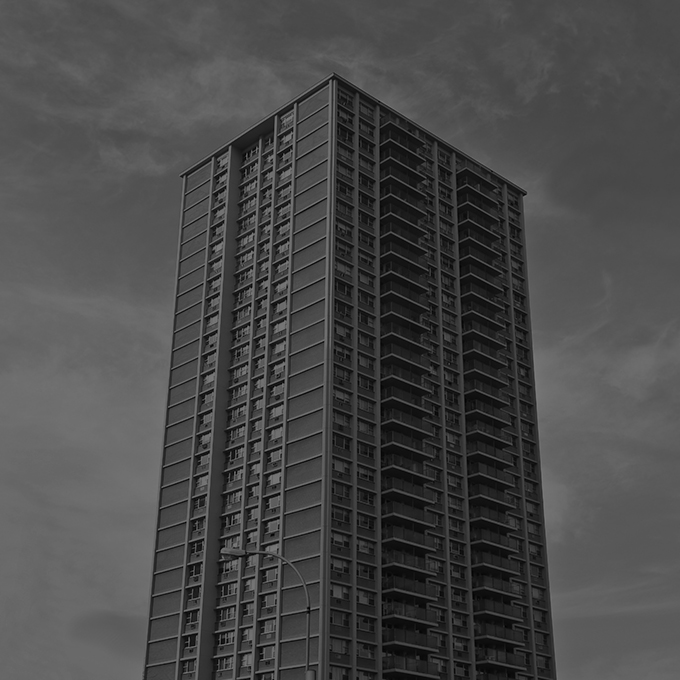Covid to Change to Commercial Landscape
Bloomberg News - Derek Decloet
Commercial landlords should prepare for hard days ahead as tenants face months of reduced business, according to the head of one of Canada’s largest real estate groups.
It will be 2022 before a “new normal” takes hold in the property market, said Michael Cooper, chief executive officer of Dream Office REIT and president of Dream Unlimited Corp. “I’m planning for tough, tough times ahead, just because I think it’s prudent,” Cooper said on BNN Bloomberg TV. “People talk about what per cent of rent they got in April. That was only two weeks” of the economic shutdown.
“Many retailers are in trouble,” Roelof van Dijk, director of Canadian market analytics at CoStar Group Inc., a real estate research firm. “I think when we get to the other side of this, there’s a real reckoning to be had.”
Companies still need to get through July and into winter. When they do open up it won’t be easy for them to “make enough money in their restaurants or elsewhere to cover their variable costs, let alone their rent,” he said.
Canada’s federal and provincial governments crafted a plan to help companies with rent for April, May and June. The program offers forgivable loans to commercial landlords, while business tenants pay no more than 25 per cent of their usual rent.
But only firms with less than $20 million (US$14 million) in gross annual revenue can apply for the subsidy. And those who are eligible must show at least a 70 per cent drop in revenue compared with pre-virus times.
Cooper said his companies would try to use the program. “But in the meantime, people have paid April’s rent, tomorrow’s May 1, so there’s a lot of confusion,” he said. “Hopefully it will work out over time, but it won’t be working out smoothly.”
Dream Office REIT holds a portfolio of office buildings with about 6 million square feet of space, the majority of it in downtown Toronto. His group also runs Dream Industrial REIT, which owns industrial property in Canada, the U.S. and Europe.
The commercial real estate market won’t return to normal for a couple of years, Cooper said.
“Really, 2022 is going to be a time frame where you can look at what the value of a building is and deal with it with confidence — you know what the rental rates are, what the demand is,” he said.
Canada’s malls are facing a wave of skipped rents and could see vacancy rates triple by year-end, with the coronavirus poised to leave its scars on a fragile retail sector long after the pandemic ends.
Malls and main-street shops, bastions of community commerce, were already under pressure after two years of weak retail sales, rising property taxes and the shift to e-commerce. Nationwide shutdowns of all but essential stores during the pandemic have added further strain, with landlords facing lost rental income and tenant closures.
Longer term, fear of new outbreaks may only accelerate the shift online — even for movies and restaurants, which had been touted as potential buffers for malls.

Pandemic = Red Ink on Provincial Books
RBC
The COVID-19 pandemic is setting provincial government deficits on course to surge more than six-fold this year to almost $63 billion.
Every province will see a material deterioration in its fiscal position. Still, the impact won’t be the worst provinces have ever experienced (under our most likely scenario). We generally do not foresee any major problems with the financing of heftier deficits in the near term. If anything, liquidity support from the Bank of Canada will ensure funding channels stay open and funding costs remain manageable. We expect deficits to shrink significantly next year as the economy recovers though the fiscal scars from the pandemic will take a long time to heal—putting at risk provinces’ credit ratings.
The extraordinary measures put in place by all levels of government to cope with the pandemic and slow its spread increasingly appear to have succeeded in fending off worst-case health and economic scenarios. While this is encouraging news, these measures are coming with hefty price tags. The federal government’s programs to protect health and safety, and directly support individuals and businesses in need total more than $230 billion (10% of GDP). Provinces’ handling of the health emergency and rollout of their own financial support programs will run in the billions of dollars too. British Columbia ($5 billion), Alberta ($7.7 billion), Ontario ($17 billion) and Quebec ($18 billion), for example, put forward historic action plans. Clearly governments are seeing enormous spending pressures that will take a heavy toll on their fiscal position.
We expect personal and corporate income taxes, and sales taxes to fall markedly in every province this year. The revenue decline could be in the order of $3 billion in British Columbia (-6% of own-revenue), $6.3 billion in Ontario (-4.8%) and $8 billion in Quebec (-8.6%) based on historical sensitivity to economic growth.
All provinces will take on more debt at a time when their economy will shrink. This means net debt as a share of GDP will rise everywhere. Newfoundland and Labrador, with the highest net debt-to-GDP ratio (40%) along with Ontario at the outset, will see its indebtedness deteriorate the most—rising 19 percentage points by our estimate.
BENJAMIN TAL ON COVID 19 (extract)
RENX.ca Steve McLean
“The next few weeks, months and quarters will test the economic IQ of every government and every central banker in the universe, because they are the first to admit that they have no clue what’s happening.” That doesn’t sound optimistic, and CIBC World Markets managing director and deputy chief economist Benjamin Tal acknowledged “it’s going to get worse before it gets better.” However, he believes Canada can slowly crawl out of the COVID-19 crisis.
“A flattening curve is not a green light to start celebrating,” said Tal, who believes China and Singapore have reduced physical distancing and other restrictions too quickly. They may now be getting a second wave that — aside from the potential human and economic toll — could also adversely affect North American financial markets. On the upside, Tal said the real estate, computer software, health and food sectors have led the economic recovery in China to this point.
Tal forecasts Canada’s overall gross domestic product (GDP) growth will be approximately negative 27 per cent this quarter and will rise by about 15 per cent in the third quarter. Investment is anticipated to decline 40 per cent this quarter and to improve slightly in the third quarter. Housing starts are expected to drop from 200,000 in 2019 to 70,000 this year and completions will be even lower. “It’s not a V-shaped recovery by any stretch of the imagination,” said Tal, noting part of the slow recovery will be by design to avoid a second wave of COVID-19 spread.
Canada’s debt-to-GDP ratio is much lower than most countries, which will help its recovery even as the federal government commits more funds to aid programs. Deglobalization has been pushed by the American government since Donald Trump’s 2016 election victory and is being accelerated and expanded by the pandemic, Tal said. He believes countries are waking up to how dependent they are on supply chains in other countries. That will put a focus on producing more at home and reducing reliance on China and other nations where products are manufactured more inexpensively.
Tal said 450,000 immigrants won’t be coming to Canada over the next six months to a year because of COVID-19 movement restrictions. This will hurt economic activity and reduce demand in the rental housing market. He anticipates purpose-built rental construction dropping over the next six months, but rebounding strongly in one to two years. Interest rates shouldn’t rise and inflation isn’t expected to increase much, according to Tal. He thinks low interest rates will enable the real estate sector to help lead the economic recovery. Tal also noted building valuations won’t change, but transaction activity will temporarily slow down.
Canada’s unemployment rate is expected to be in the low double digits through the second and third quarters, before starting to drop in the fourth quarter and early 2021. Tal said large companies will attempt to keep people in the labour force through job-sharing and reduced incomes. Many smaller companies, however, won’t be able to do so.
Tal estimates 10 to 12 per cent of the labour force is “extremely vulnerable,” and singled out restaurants as a sector that will likely have casualties.
RECENT APARTMENT SALES
7 Brule Terrace – Toronto – SOLD $4,500,000 / $346,150 per suite / 3.0% Cap Rate
This is a property located just outside Bloor West Village near the Old Mill. It comprises a walk up rental apartment building with 13 suites with frontage on Bloor Street West. Built in 1937, this building is a two story house form structure with the potential to add two more suites. The property was sold by a long time owner and purchased by a private investor. It appears to not have been marketed.
20 Pell Street - Scarborough – SOLD $7,550,000 / $235,935 per suite / 3.0% Cap Rate
This property is located in south Scarborough in a mature residential area. It comprises of a 32 suite walk up rental building with surface parking and dating from the 1950's. The suites were mostly two bedrooms with average rents about 40% below market. The site was large being just over 0.70 acres. The building was in fair condition but did need some capital work. The property was fully marketed and purchased by a private investor.
2313 Islington Avenue – Etobicoke – SOLD $22,400,000 / $280,000 per suite / 3.0% Cap Rate
This property is located in north central Etobicoke near Highway 401 in a B class neighbourhood. This is a seven storey rental apartment building with a total of 80 suites sitting on over 2.3 acres of land. It was built in 1964 and has elevators, under ground and surface parking with sizes much above average. This property was owned by the person who originally built this asset and had rents over 50% below market. This property was not fully marketed and was purchased by Golden Equity Properties.
511 Albert Street – Waterloo – SOLD $5,365,000 / $2343,860 per suite / 4.5% Cap Rate
This property is located in north Waterloo and was sold along with another property that has not yet closed. This is a 22 unit rental townhouse project built in the 1960's. The townhouses are back to back with a common internal courtyard. The building was fully occupied with low rents and the site had development potential for a mid rise residential project. The property was fully marketed and purchased by S Four Inc..
THE APARTMENT GROUP
Together the team has completed over 1,000 transactions and has sold over $5 billion in apartments and development land. Put us to work for you and see the results. NO ONE has sold more buildings then our group. Experience, knowledge and professionalism will insure you get the right deal or the highest price if you are selling.
The Apartment Group is a dedicated team of professionals specializing in the sale of multi-residential investment properties. With over 40 years of combined experience, the team brings together their strengths including strong negotiation and sales skills along with highly technical market analysis and appraisal methods.
We are a boutique Brokerage but have the capabilities of the larger houses without the overhead. We have: an internal database of over 10,500 active apartment and land Buyers; a list of all apartment building owners in the Greater Toronto Area; our web site gets over 50,000 hits a month; we highlight properties for sale through our newsletter which reaches 10,000 investors monthly.
MITCHELL CHANG
President & Owner,
Salesperson
Direct: 416-907-8280
mchang@cfrealty.ca
LORENZO DIGIANFELICE, AACI
Broker of Record, Owner
Direct 416-907-8281
ldigianfelice@cfrealty.ca
JAKE RINGWALD
Salesperson
Direct 416-996-7713
jringwald@cfrealty.ca


